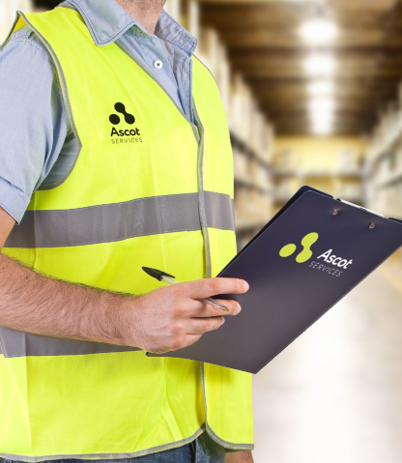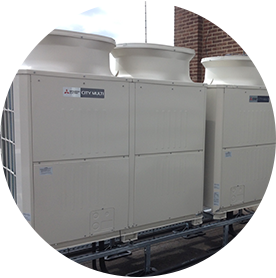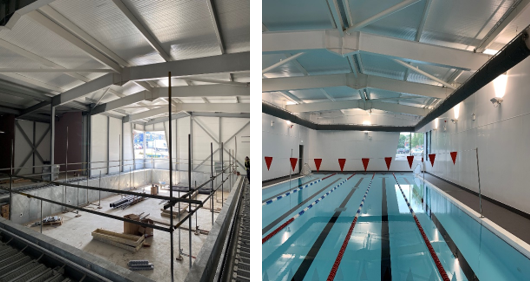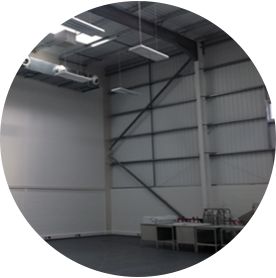Energy Management, UK
This project is the perfect example of what can be achieved when a true partnership is formed between an FM Provider with proficiency in engineering services and an innovative controls systems integrator. While Ascot Services led the charge via our Energy Management team, our Supply Chain partner, Chartwell executed complex modifications based on analysis, ultimately resulting in unprecedented energy savings.

The objective was to significantly reduce the carbon footprint across the portfolio of 9
buildings nationally which had a total pre-project consumption of 27.7GWh by focusing
on minimising HVAC consumption to meet the SBTi targets that both DLG and Ascot Services
have signed up to while ensuring occupants’ comfort was not compromised in any way.
This was especially difficult as all the buildings across the portfolio have varying occupancy
times on individual floors and zones. This also meant that several bespoke solutions
needed to be configured to work in unison, marrying intuitive engineering with clever
processes while reimagining service delivery to achieve the desired results for the client,
allowing us to effectively optimise the existing systems with constant monitoring and analysis
to drive immediate change with minimal investment.
The Solution
The control strategy comprised of a combination of free heating and cooling, demand control, weather compensated system loading and bespoke/tailored optimiser control working in unison. The design was set up to automatically switch between varying combinations of these control elements to determine the most efficient way to run the HVAC plant while maintaining optimal environmental conditions.
Exercise strategy was also implemented to monitor run times and conduct plant exercising only when systems have not run for predetermined intervals, effectively maintaining plant availability and water quality.
The Benefits
The system ensures that the free heating and or cooling from the outside air is first utilised to condition the space, minimising the use of the boilers and chillers and their associated primary and secondary plant. The demand control ensures that the loading of these primary systems are available when required by specific zones within the buildings, even when occupancy patterns deviate from normal.
Having the system accessible from a “single pane of glass” with remote access capabilities meant that we were also able to respond to changes in environmental conditions in real-time, enabling persistent monitoring and testing while allowing for adjustments and changes to the strategy to be made quickly and effectively. We also developed automated analytical alarms to aid in the process of pinpointing shortfalls in the strategy, ensuring amendments were effectively deployed.
All of these combined resulted in a reduced consumption profile across all buildings in the portfolio and contributes to a prolonged plant lifecycle. It means that environmental conditions within the occupied spaces are always maintained at an optimal level at all times, ensuring the client’s objectives were achieved.
The Results
Compared to the pre-project annual consumption of 27.7GWh (2018) we saw a 22% reduction in consumption in 2019, a 55% reduction in consumption in 2020 (covid), a 55% reduction in consumption in 2021 was maintained even though occupancy went back up post-covid and a 72% reduction in consumption in 2022 (project completion).
“Ascot Services & Chartwell Controls have provided a proactive approach to energy management across the DLG estate, working in partnership with the DLG Property team. The improvements that have been implemented have allowed the DLG Property Team to clearly monitor the building energy management systems across the core office portfolio whilst also allowing Ascot services & Chartwell the opportunity to deliver further improvements as opportunities arise. Their collective vision has also allowed the introduction of the energy strategies which significantly reduced the energy usage across our office estate. The data gained from the BEMS management has supported DLG’s SBTI targets and requirements over the coming years.
With the installation of air quality sensors, we are now able to monitor and control the environmental conditions at any point in time across the buildings. This technology allows Ascot & Chartwell to implement BEMS strategies within the plant operational software to control the Air Handling Unit fan speeds based on CO2 and Temperature. Whilst this has positive energy and engineering impact it importantly has an incredibly positive impact on the office spaces and end users; providing an environment where DLG colleagues can excel.“
Tony Wilkinson
Head of Property Operations & Technical Services
Direct Line Group
If you would like further information or have an enquiry you would like to discuss, please get in touch


Bright Horizons Teddies Nursery Sheffield
Bright Horizons are an American owned Childcare provider with a portfolio of Circa 300 Children’s Nurseries throughout the UK, making them one of the leading childcare providers in the country. With a demand of constant...
Find out more

BT Bradford
The scope of works for BT Bradford Refurbishment was to take a disused warehouse on the Legrams Lane site and create a bespoke Fibre Training Room Facility. The facility was to include 9 Training Rooms,...
Find out more
DLG Bristol Refit
The largest UK general insurer, Direct Line Group (DLG), as part of their property strategy, had decided to ....
Find out more
Energy Management, UK
Find out more

Fire Fighters Charity Carlisle
The Fire Fighters Charity (FFC) provide a modern day service that provides life enhancing health and wellbeing support to the whole fire community. The FFC are proud to support everyday firefighting heroes. They provide accommodation...
Find out more
Genting Casinos Birmingham
Following appointment to become the Main FM service partner to Genting Casino UK in 2015, Ascot Services undertook detailed dilapidation surveys of the client’s estate via our in house expert engineering team. The information provided...
Find out more
Great Lever Childrens Centre
The Great Lever Children’s Centre is one of several Bolton Council owned and run Start Well Centres which operate all across the borough with the aim of supporting families
Find out more
Project: Dukeries Leisure Centre New 20m Swimming Pool Build
Find out more

Swiss Post Solutions Canning Town, London
We were instructed to design and deliver a full refurbishment of a new Warehouse to create a secure, accessible, energy efficient work space.
Find out more
Total Swimming Becontree Leisure Centre
In Conjunction with Total Swimming, Ascot Services have been appointed as the main contractor for a Design & Build project to construct the new 50m swimming facility adjacent to the existing Becontree leisure centre on...
Find out more

© Ascot Services 2024
